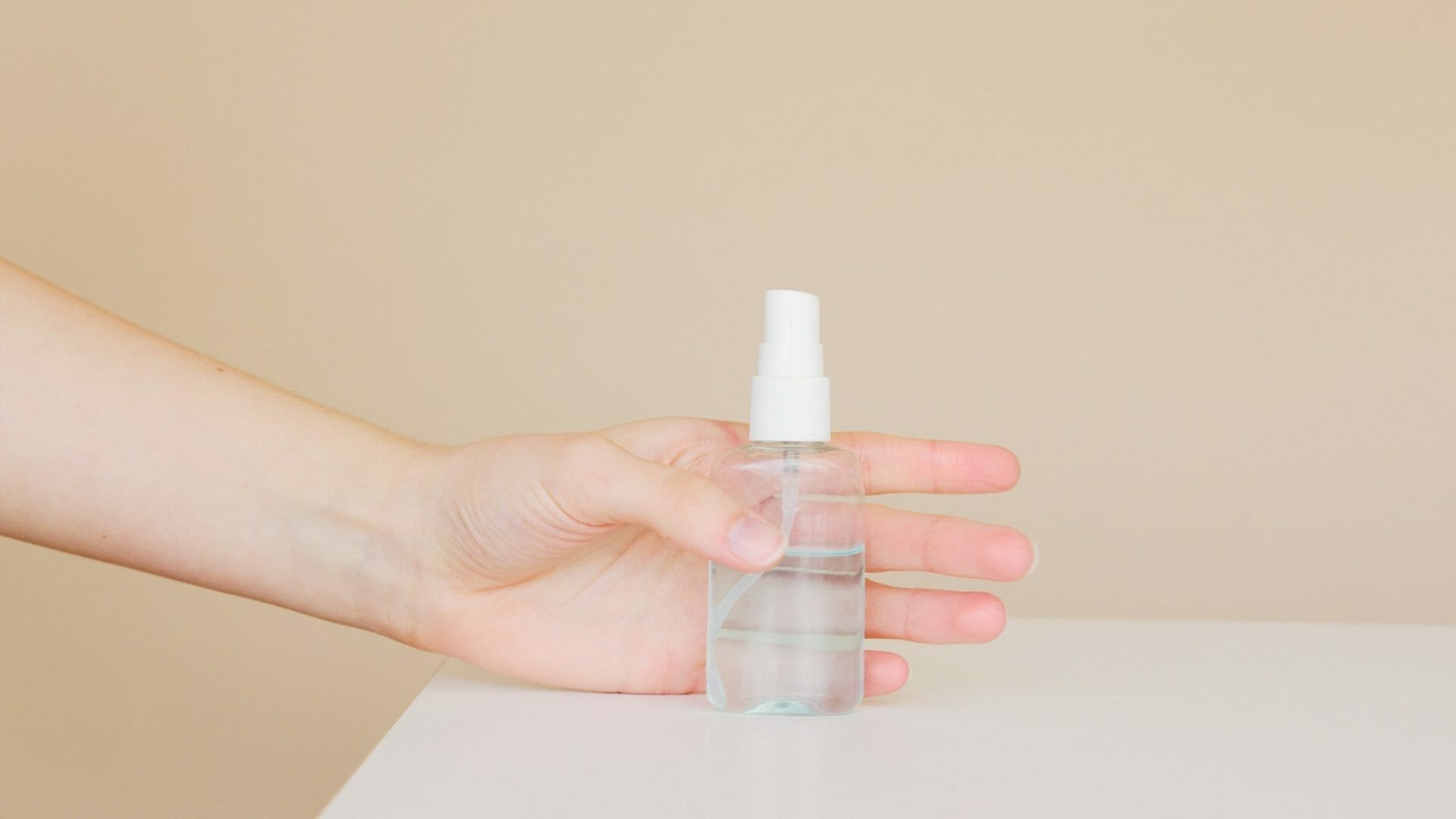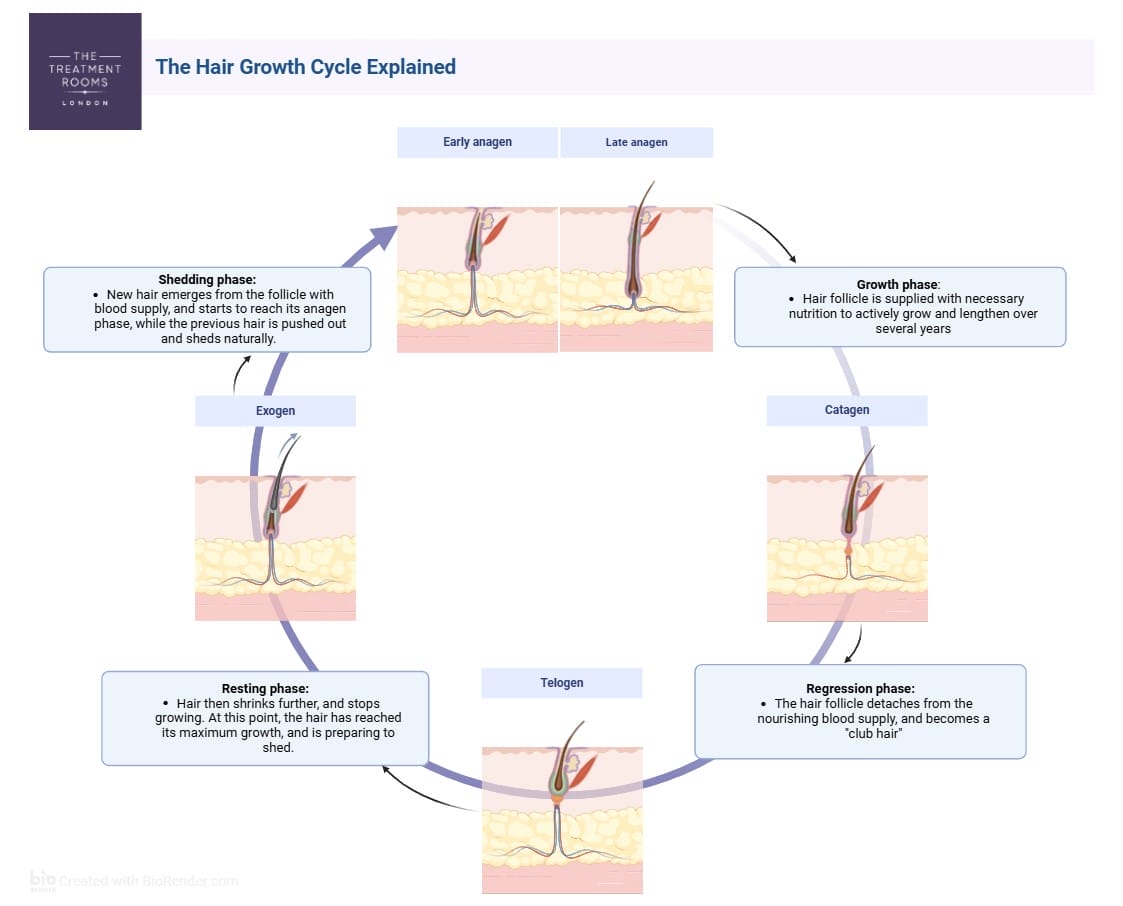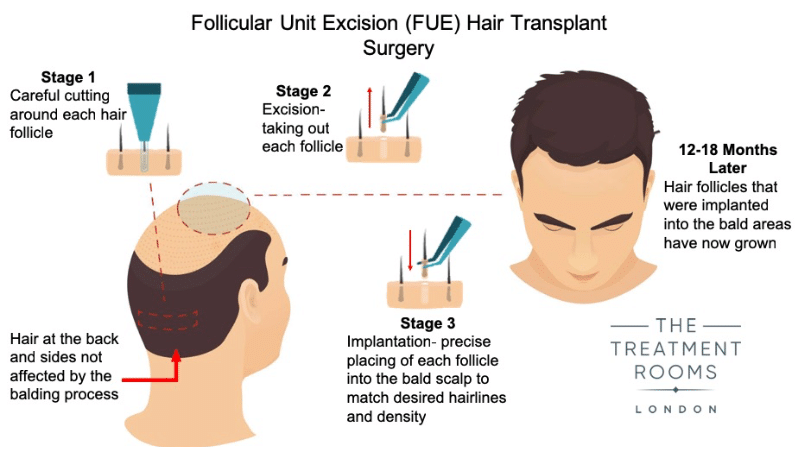For many women, hair is an expression of identity, personality and self-image. During menopause, the body undergoes numerous physiological changes, including an increased risk of hair loss.
Losing one’s hair can be stressful and damaging to self-esteem, but understanding why these changes occur can help women be better prepared to face them and explore available treatment options.
In this article, we’ll explore why hair loss happens during menopause and offer practical solutions for managing and treating this condition.
What is Menopause?
Menopause is the permanent cessation of a woman’s periods (also known as menses) and the loss of reproductive function due to the complete depletion of the ovarian follicle (egg) supply.
Perimenopause is the transition state that precedes menopause, which is characterised by wide hormonal fluctuations and irregular menstrual patterns with women having at least one menstrual cycle every 3 months¹.
Menopause can also happen due to medical reasons such as surgery that involves removing the ovaries (oophorectomy) or the uterus (hysterectomy), cancer treatments like chemotherapy, or a genetic cause.
While menopause brings several physiological changes, one of its distressing symptoms for many women is hair loss due to heightened androgen (sex hormone) levels in the body that trigger hair follicle damage.
Studies have shown that more than half of all women experience some degree of noticeable hair loss throughout their lives. It is estimated that 70% of women over the age of 70 experience hair loss.
The Hair Growth Cycle
For some background information, let’s take a look at the normal hair growth cycle:
Anagen Phase (Growth Phase)
- Duration: 2 to 7 years.
- Characteristics: Hair actively grows approximately 1 cm per month. Additionally, 90% of hair strands are usually in this phase at any given time.
- This is the most extended phase. It also determines the length of hair.
Catagen Phase (Transition Phase)
- Duration: 2 to 3 weeks.
- Characteristics: The hair follicle transitions, but growth stops. Only 1-2% of hair is in this phase at any moment.
- This brief phase marks the end of active growth.
Telogen Phase (Resting and Shedding Phase)
- Duration: 3 months.
- Characteristics: Hair rests before detaching from the follicle and falling out. Under normal conditions, up to 8-9% of scalp hair is in this phase.
How does hair loss occur in menopause?
It is normal to shed around 50 to 100 hairs each day. Oestrogen is a hair-friendly hormone that helps to elongate the hair growth cycle.
As women age, the production of oestrogen and progesterone, hormones that support hair growth, declines.
These hormones are crucial for maintaining the hair growth cycle and keeping hair thick and healthy.
As their levels decrease, they lead to shorter hair growth cycles, thinning, and increased shedding, which can result in hair loss. Reduced oestrogen can also lead to a drier, more sensitive scalp, affecting overall hair health.
At the same time, levels of androgens (such as testosterone) may remain relatively stable or even increase compared to the declining oestrogen.
Androgens can cause hair follicles to shrink, resulting in thinner hair strands and, ultimately, hair loss. This condition is known as androgenic alopecia, also referred to as female pattern hair loss, and it often presents as diffuse thinning across the scalp.
It’s essential to remember that various factors can contribute to hair loss in women, so if you notice changes, it may not be due to menopause alone. It’s a good idea to consider other possible causes as well.
Other causes of hair loss:
Other factors, such as stress, nutritional deficiencies, certain medications, and hairstyles or styling practices that put excessive tension on the hair follicles, can all contribute to hair loss in women.
- Stress: This can disrupt the normal hair growth cycle, resulting in hair loss.
- Nutritional deficiencies: Deficiencies in vitamins such as D, iron, B12, folate, and zinc, as well as other essential minerals, can significantly impact hair growth and contribute to hair loss.
- Medications: Certain medications, such as chemotherapy drugs, can cause hair loss as a side effect.
- Damaging Hairstyles: Harsh treatments, tight braids, or ponytails can put excessive tension on hair follicles, leading to hair loss.
Hair loss can be complex with multiple contributing factors. It is essential to consult a healthcare professional if you are experiencing hair loss to determine the underlying cause and develop an appropriate treatment plan.
For more information on other types of hair loss, please visit this link.
Common Symptoms of Hair Loss During Menopause
Hormonal changes seen during puberty, pregnancy and menopause can create chemical imbalances within the body, which trigger hair loss. Like men, women’s bodies produce sex hormones known as ‘androgens’, such as testosterone.
An increase in androgens may lead to destruction of hair follicles and loss over time. Both male pattern and female pattern hair loss are scientifically known as ‘androgenetic alopecia’ due to this.
To measure female pattern hair loss to a certain degree, the Ludwig scale can be used. Female pattern baldness develops gradually over time, and as it progresses, the symptoms often become more pronounced. It is therefore essential to know your stage to choose the best possible treatments.

How does female pattern baldness appear?
The signs and degree of female pattern baldness can differ from one person to another, but are the most common things to search for are:
- Thinning Hair: The primary symptom is that hair on the scalp thins out gradually, with increased shedding. Women affected by female pattern baldness typically notice that their hair is thinner and lacks the fullness it once had. The hair may also be slower to grow back.
- Widening Part Line: Another common indication is that the part line gets wider. When more hair is lost in a particular area, the parting may become wider and clearer, revealing the scalp more noticeably when styling or parting the hair.
Female pattern hair loss according to the Ludwig scale
STAGE 1
At this stage, mild thinning is present, mainly on the top of the scalp or in the hair’s central parting.
STAGE 2
At this stage, moderate thinning is present, with noticeable widening of the hair’s parting and a reduction in hair volume.
STAGE 3
At this stage, the advancing thinning and hair loss are present, accompanied by a much more transparent appearance on the top of the scalp.
How does hair loss affect the body?
Female pattern hair loss can have a significant psychological impact on individuals, leading to anxiety, depression, decreased self-esteem, and social withdrawal.
Hair loss can affect not only the scalp in menopause, but also a slowing of growth on the arms, legs and underarms.
It is essential to address the psychological impact of hair loss as part of a comprehensive treatment and management plan. Reaching out for help from friends, family, or specialists such as The Treatment Rooms London can be beneficial, as we recognise that hair loss can have a significant impact on quality of life.
When to Seek Help?
While menopause commonly triggers hair loss, it is essential to rule out any underlying conditions rather than assuming they are the cause.
They are the cause. Consult with your healthcare provider to determine the cause of your hair loss, allowing for proper management to be implemented.
An accurate medical history, examination, and tests should be conducted to determine other possible causes or triggers of hair loss, including nutritional deficiencies, stressful situations, or underlying disease conditions.
How to prevent hair loss during menopause?
- Minimise stress: Ensure that you can control your stress level, so your hormones remain in balance. Practising yoga or any other breathing relaxation technique is beneficial in combating menopausal symptoms.
- Work out often: Regular exercise can be another effective way to reduce stress. Physical activity is a key component of a healthy lifestyle. It also mainly averts some other menopausal symptoms such as mood changes, weight gain, and sleeplessness. All these contribute to hormonal balance, which is essential in healthy hair growth.
- Eat a balanced diet and supplements: The best form of defence against hair loss is to eat a balanced, low-fat diet. Use of vitamin B6 and folic acid supplements can aid in regaining hair growth.
- Limit heat styling: Avoid using heat tools, such as hair dryers and straightening irons, to prevent dryness and breakage.
- Gentle hair care: Extensions and other styling methods can also weaken your hair and cause early hair loss.
How To Treat Hair Loss In Menopause?
There are numerous treatments available on the market for menopause-related hair loss, including both medical and surgical options, as well as lifestyle changes to enhance overall health and hair health.
Lifestyle:
- Supplementing Nutritional Deficiencies: Addressing nutritional deficiencies can significantly contribute to healthy hair growth. Specific vitamins and minerals, such as vitamins A, B, C, D, and E, as well as zinc and iron, play a crucial role in maintaining healthy hair, skin, and muscle tissue. Please first consult with your healthcare provider before starting any new supplements.
- Reduce stress: Stress can impact our sleep, eating patterns, and hormones, which may lead to higher levels of androgens that contribute to hair loss. High levels of physical or emotional stress can cause a temporary form of hair loss known as ‘telogen effluvium’. Consider trying relaxation techniques, such as meditation, exercise, or speaking with a therapist, to manage stress.
- Avoid physical hair damage: Tight ponytails, cornrows, braids, and anything else that draws on the small hairs that make up your hairline can cause hair loss. Avoid using hair tools that generate high heat and harsh chemicals, as they can cause brittle and breakable strands.
Maintaining strong and clean hair can help prevent breakage and premature shedding. For more information on the best hair care routines, click here. - Wigs and Hair Systems: To cover up in a more straightforward fashion, wigs and hair systems can help conceal hair loss and offer an instant boost of confidence.
Medical:
- Minoxidil is typically the first-line treatment for female hair loss. This medication helps increase blood flow (including the delivery of nutrients and oxygen) to hair follicles, which can boost hair growth. It is an over-the-counter medication that can be applied directly to the affected area of the scalp. It is often sold in liquid or foam form, and is available in two strengths: 2% and 5%.
- Finasteride: While effective, this alternative hair loss medication is only approved for use in certain women, for example, those beyond childbearing age, due to its risk of birth defects. Finasteride works by blocking the damage to hair follicles caused by androgens.
- Hormone Replacement Therapy (HRT): This is a standard treatment used to replace the hormones that decline during perimenopause and menopause, thereby reducing the symptoms of these conditions.
While HRT can help reverse hair loss associated with a dip in oestrogen levels, it can be life-changing for those with other severe menopausal symptoms such as hot flushes, night sweats and mood changes.
- Spironolactone: Spironolactone, commonly used as a medication to lower blood pressure and reduce water retention, can also help reduce androgen levels and treat both female pattern hair loss and hirsuitism (excessive body hair growth).
- Low-level laser therapy (LLLT): Low-level laser therapy, also known as red light therapy or cold laser therapy, is a non-invasive treatment option. Light has been shown to stimulate hair growth and increase density in both men and women.
Surgical:
- Platelet-rich plasma is an invasive procedure that involves taking blood samples from the body, processing them to concentrate platelets and growth factors, and injecting the concentrated solution back into the scalp to potentially stimulate hair growth potentially.
- Hair Transplant Surgery: Hair transplant surgery involves physically transplanting hair from one part of the scalp, typically the back and sides, to another part to restore density and fullness. This procedure can be performed in both men and women with significant hair loss.
If you’re a woman experiencing excessive hair loss, it’s best to first speak with your GP to rule out any underlying conditions.
They may refer you to a dermatologist or trichologist for further assessment. If hair transplant surgery becomes a suitable option, you may then be referred to a specialist, such as those at The Treatment Rooms London.
While we specialise in hair transplant procedures, we’re happy to assess your suitability and guide you in the right direction on your hair restoration journey.
Conclusion
Hair loss during menopause is a common and often distressing experience for many women. Understanding the hormonal changes and other factors that contribute to this condition is crucial for finding effective treatment options.
By addressing hormonal imbalances, managing stress, and adopting healthy hair care practices, women can take proactive steps to maintain their hair health during this transitional and often chaotic phase.
For those seeking more advanced treatments, options such as hormone replacement therapy, topical treatments, and hair transplantation offer promising solutions to manage and even reverse hair loss.
Hair Loss During Menopause Frequently Asked Questions
- Can hair regrow after menopause?
Yes, if addressed early, hair thinning can be partially reversed using a combination of lifestyle and medical treatments to stimulate hair growth.
- How long does menopausal hair loss last?
Menopausal hair loss can last as long as your body goes through hormonal changes, which can span several years.
- Must everyone going through menopause undergo hair loss?
Everyone sheds around 50-100 hairs a day, regardless of whether they are menopausal or not. Not everyone going through menopause will experience hair loss.
References
- Santoro, N., Roeca, C., Peters, B. A., Neal-Perry, G. (2021) ‘The Menopause Transition: Signs, Symptoms, and Management Options’, The Journal of Clinical Endocrinology & Metabolism, 106(1), pp. 1–15. Available at: https://doi.org/10.1210/clinem/dgaa764
- NHS. Menopause Overview. Available from: https://www.nhs.uk/conditions/menopause/
- Zouboulis, C. C., Blume-Peytavi, U., Kosmadaki, M., Roó, E., Vexiau-Robert, D., Kerob, D., & Goldstein, S. R. (2022) ‘Skin, hair and beyond: the impact of menopause’ Climacteric, 25(5), pp. 434–442. Available at: https://doi.org/10.1080/13697137.2022.2050206
- Rinaldi F, Trink A, Mondadori G, Giuliani G, Pinto D. (2023) ‘The Menopausal Transition: Is the Hair Follicle Going through Menopause?’ Biomedicines, 11(11), pp. 3041. Available at: https://www.ncbi.nlm.nih.gov/pmc/articles/PMC10669803/
- Rajput, R. (2022) ‘Influence of nutrition, food supplements and lifestyle in hair disorders’, Indian Dermatology Online Journal, 13(6), 721. Available at: https://www.ncbi.nlm.nih.gov/pmc/articles/PMC9650738/
- Suchonwanit, P., Thammarucha, S., and Leerunyakul, K. (2019) ‘Minoxidil and its use in hair disorders: a review’, Drug design, development and therapy, 13, pp.2777–2786. Available at: https://doi.org/10.2147/DDDT.S214907
- International Society of Hair Restoration Surgery. “Hair Transplantation for Women.” Available from: https://ishrs.org/hair-transplantation-for-women/
- Chaikittisilpa S, Rattanasirisin N, Panchaprateep R, et al. Prevalence of female pattern hair loss in postmenopausal women: a cross-sectional study. Menopause. 2022;29(4):415-20. doi:10.1097/GME.0000000000001927
Share:
Authored by
Reviewed by
Book a Consultation
Related Blogs
Can Black Seed Oil Help Hair Growth?
November 26, 2025
Quick Summary: Black Seed Oil & Hair Growth Black Seed Oil for Hair: Emerging as a key…
Do Hats Cause Hair Loss? Debunking Myths & Understanding the Facts
November 26, 2025
Hats have been a global trend to wear, whether for style, warmth, or sun protection. But have…
What Happens If You Stop Using Minoxidil
November 2, 2025
If you’ve been consistently applying minoxidil to support your hair growth, have you ever wondered what happens…
Unlocking the Secrets of Anagen Follicles
October 23, 2025
Have you ever glanced at a mirror and wondered why some of your hair grows fast and…
Does Finasteride Cause Erectile Dysfunction?
October 22, 2025
Finasteride is one of the most promising medicines against male pattern baldness and benign prostatic hyperplasia (BPH)….
Zinc Supplements After Hair Transplant Surgery: What You Need to Know
October 7, 2025
Zinc is an essential nutrient in wound healing, tissue repair, and the healthy development of hair follicles….
What to Eat After a Hair Transplant: Essential Nutritional Guide
October 5, 2025
After the stress, needles, and surgeries, food becomes more than nourishment. A warm bite, a familiar flavour,…
Hair Loss Treatment That Works: A Complete Guide for 2025
October 3, 2025
Millions of men, women, and teenagers have hair loss problems. In 2025, hair restoration is going through…
What is an FUE Hair Transplant?: A Comprehensive Guide to Procedure, Recovery, and Results
October 3, 2025
Hair transplant surgery has gained popularity over the years, with more people now comfortable taking care of…











